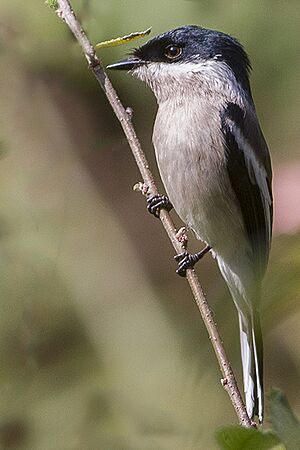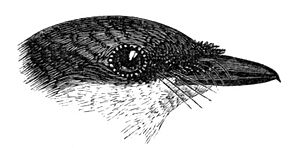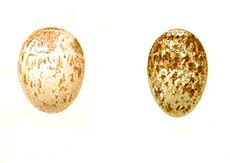Bar-winged flycatcher-shrike facts for kids
Quick facts for kids Bar-winged flycatcher-shrike |
|
|---|---|
 |
|
| Hemipus picatus capitalis from Uttarakhand, India |
|
| Conservation status | |
| Scientific classification | |
| Genus: |
Hemipus
|
| Species: |
picatus
|
| Subspecies | |
|
|
| Synonyms | |
|
Muscicapa picata |
|
The bar-winged flycatcher-shrike (Hemipus picatus) is a small bird that lives in forests. It's found in warm parts of southern Asia, like the Himalayas, southern India, and Indonesia. This bird mostly eats insects. You can often spot it hunting in the middle parts of forest trees. It sometimes joins groups of different bird species looking for food.
These birds sit upright on branches. They have a special black and white pattern. Male birds are usually a shinier black than females. In some areas, their backs might be brownish. Other birds of this species might have a dark shade on their bellies.
Contents
What Does the Bar-winged Flycatcher-Shrike Look Like?
The bar-winged flycatcher-shrike has a black cap on its head. Its wings are black, which stands out against its white body. A white stripe across its wing and a white patch near its tail are easy to spot. They sit straight up on branches. They fly around to pick insects from leaves or catch them in the air.
Their nostrils are hidden by tiny hairs. The top part of their beak has a curved tip. Males are a deep, velvety black. Females often look more greyish-brown. However, their colors can change depending on where they live.
Color Differences in Subspecies
For example, both male and female birds in the Himalayan H. p. capitalis group have brown backs. But the males still have a black head. The birds in Sri Lanka, called leggei, look very similar whether they are male or female. In the H. p. intermedius group, only the females have a brownish back.
The tail of the bar-winged flycatcher-shrike is black. But the feathers on the outer edges of the tail are white. The feathers that are not in the very center of the tail have white tips.
Bird Calls
The call of this bird is fast and high-pitched. It sounds like tsit-it-it-it or whriri-whirriri-whirriri. Sometimes, they make a sharp chip sound. Male and female pairs of the leggei subspecies in Sri Lanka have been known to sing together very precisely.
Young bar-winged flycatcher-shrikes are said to have a mix of white and grey patterns. This makes them look a bit like moss or lichen.
Where Do Bar-winged Flycatcher-Shrikes Live?
The main group of these birds, called the nominate race, lives mostly in the Western Ghats of India. They are also found in parts of central and eastern India, and into Bangladesh.
Another group, capitalis, lives along the Himalayas. You can find them from Simla, India, all the way east to Manipur and Chittagong. They also live in northern Thailand, Myanmar, and Laos.
The leggei subspecies lives in Sri Lanka. In this group, males and females look alike. They live in the hill forests of Sri Lanka.
The intermedius subspecies is found in Southeast Asia. This includes Sumatra, Borneo, and parts of the Malay Peninsula. Females in this group have a darker brownish-grey color on their chest. This color stands out against their white bellies. Their backs are also a darker brown than other groups. Males in this group also have darker chests.
How Do Bar-winged Flycatcher-Shrikes Behave?
This bird catches insects in two main ways. It picks them off leaves and branches. It also flies out to catch insects that are startled and flying in the air. These birds often join groups of other small birds when they are looking for food. These groups might include babblers, velvet-fronted nuthatches, and white-eyes. They move through the forest and don't usually stay in one spot for long.
Nesting Habits
In Sri Lanka, the nesting season is mostly from February to August. In India, it's from March to May. The nest is a neat, cup-shaped home. It's held together strongly by spiderwebs. The inside is lined with soft grass and fibers. The outside of the nest is covered with lichens. This helps the nest blend in.
They usually build their nests on the flat part of a dry branch. Often, it's near the tip of a dead branch or on a tree without leaves. This makes the nest look like a natural bump or knot in the wood. A female bird usually lays 2 or 3 eggs. The eggs are pale greenish-white with black and grey spots.
When a bird sits on the nest, it looks like it's just casually perched there. Both male and female birds help to keep the eggs warm. When the baby birds are in the nest, they stay very still with their eyes closed. They face the center of the nest and hold their beaks high. This makes them look like a broken branch, helping them stay hidden.
These birds are thought to be affected by damage to forests. However, some studies show that they are quite tough. They can even live in forests that have been disturbed quite a bit by humans.





